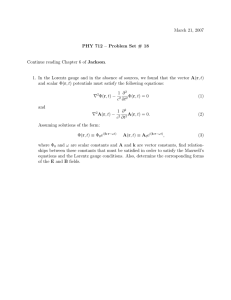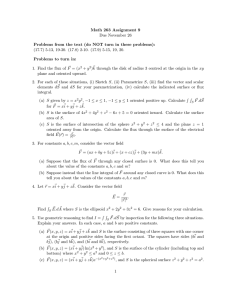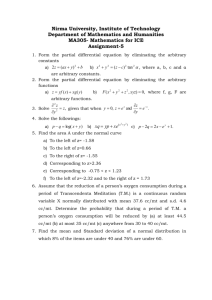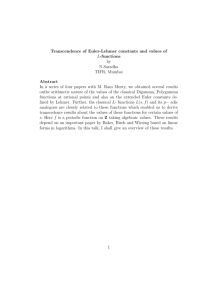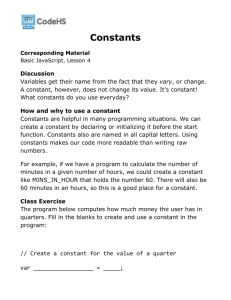Math 6A, Section 1
advertisement
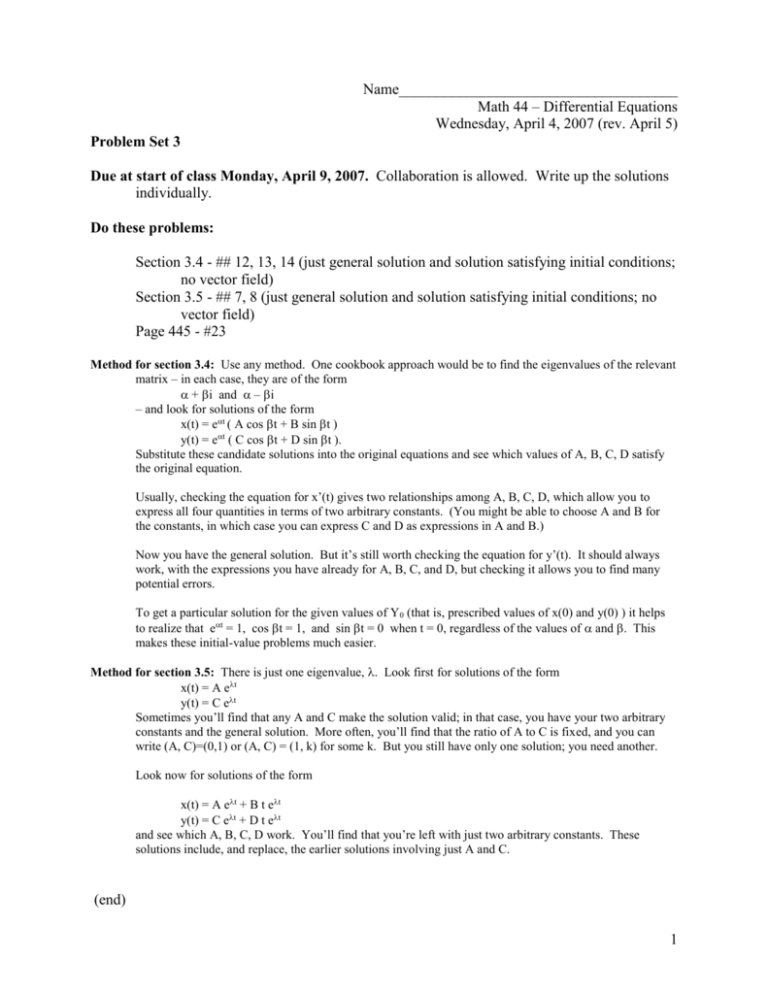
Name_____________________________________ Math 44 – Differential Equations Wednesday, April 4, 2007 (rev. April 5) Problem Set 3 Due at start of class Monday, April 9, 2007. Collaboration is allowed. Write up the solutions individually. Do these problems: Section 3.4 - ## 12, 13, 14 (just general solution and solution satisfying initial conditions; no vector field) Section 3.5 - ## 7, 8 (just general solution and solution satisfying initial conditions; no vector field) Page 445 - #23 Method for section 3.4: Use any method. One cookbook approach would be to find the eigenvalues of the relevant matrix – in each case, they are of the form + i and – i – and look for solutions of the form x(t) = et ( A cos t + B sin t ) y(t) = et ( C cos t + D sin t ). Substitute these candidate solutions into the original equations and see which values of A, B, C, D satisfy the original equation. Usually, checking the equation for x’(t) gives two relationships among A, B, C, D, which allow you to express all four quantities in terms of two arbitrary constants. (You might be able to choose A and B for the constants, in which case you can express C and D as expressions in A and B.) Now you have the general solution. But it’s still worth checking the equation for y’(t). It should always work, with the expressions you have already for A, B, C, and D, but checking it allows you to find many potential errors. To get a particular solution for the given values of Y0 (that is, prescribed values of x(0) and y(0) ) it helps to realize that et = 1, cos t = 1, and sin t = 0 when t = 0, regardless of the values of and . This makes these initial-value problems much easier. Method for section 3.5: There is just one eigenvalue, . Look first for solutions of the form x(t) = A et y(t) = C et Sometimes you’ll find that any A and C make the solution valid; in that case, you have your two arbitrary constants and the general solution. More often, you’ll find that the ratio of A to C is fixed, and you can write (A, C)=(0,1) or (A, C) = (1, k) for some k. But you still have only one solution; you need another. Look now for solutions of the form x(t) = A et + B t et y(t) = C et + D t et and see which A, B, C, D work. You’ll find that you’re left with just two arbitrary constants. These solutions include, and replace, the earlier solutions involving just A and C. (end) 1


